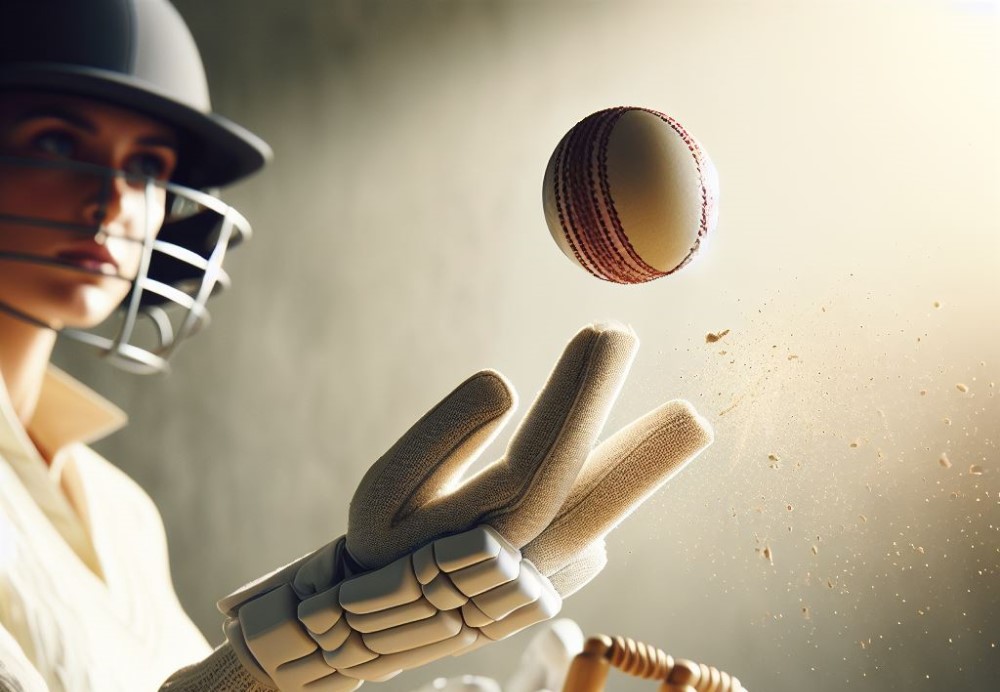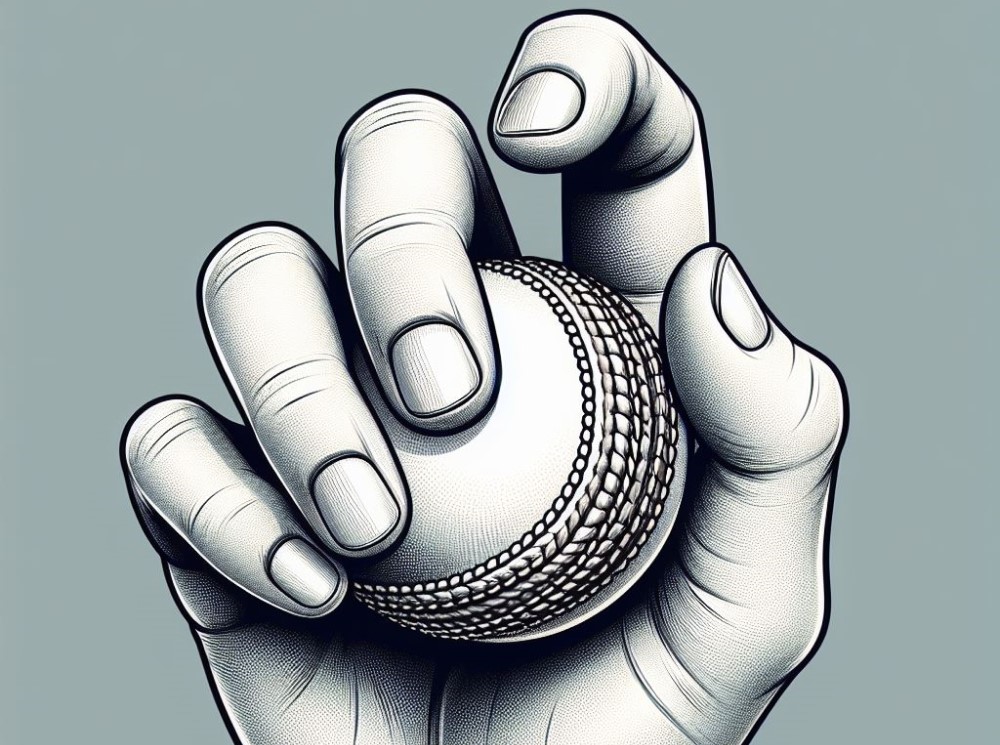
Whats the Role of Finger Position in Spin Bowling in Cricket
Spin bowling is a crucial aspect of cricket that adds complexity and excitement to the game. It refers to the technique of imparting spin to the cricket ball through the bowler’s finger position, influencing its trajectory and behavior upon pitching. By expertly manipulating the ball’s spin, spin bowlers can deceive batsmen, create variations, and take wickets.
The finger position plays a vital role in spin bowling, determining the type and degree of spin produced. It affects the movement of the ball, both in the air and off the pitch, making it a key factor in a spinner’s effectiveness. By understanding the different finger positions and their effects, spin bowlers can enhance their skills and become more successful on the field.
There are three main types of finger positions utilized in spin bowling: the off-spin finger position, the leg-spin finger position, and the googly finger position. Each position creates a specific spin, leading to different trajectories and levels of difficulty for batsmen to read and play.
The finger position directly influences the spin produced by the ball. It determines the direction and amount of turn the ball will take when it hits the pitch. The position of the fingers, coupled with the grip and release of the ball, creates spin by creating a difference in air pressure on either side of the ball.
This pressure differential causes the ball to deviate from its normal trajectory and move laterally, making it challenging for the batsman to predict and play accurately.
In addition to spin, finger position can also be utilized to create drift, which refers to the subtle movement of the ball in the air. By adjusting the finger position and release, spin bowlers can make the ball drift in the air towards or away from the batsman, adding an extra layer of complexity and difficulty.
To improve finger position, spin bowlers should focus on their grip and finger placement on the ball. Proper grip ensures better control and allows for maximum spin. Varying finger pressure during the release can create subtle changes in spin and trajectory, keeping the batsman guessing. The wrist position and hand movement also contribute to effective finger position, providing the necessary control and power for spin bowling.
However, spinners should be cautious of common mistakes such as incorrect finger placement, lack of finger control, and over-reliance on finger position. These pitfalls can lead to ineffective spin and compromised performance. Troubleshooting these issues and focusing on proper technique can help spin bowlers master the art of finger position and become formidable assets for their teams.
By understanding the role of finger position in spin bowling and implementing the right techniques and tips, spin bowlers can elevate their game and become skilled tacticians in the sport of cricket.
Understanding Spin Bowling in Cricket

Spin bowling is a vital aspect of cricket, necessitating skill, technique, and an understanding of the game. An understanding of spin bowling in cricket involves grasping how to grip the ball, how to apply pressure with the fingers, and how to release the ball with the right amount of spin.
This knowledge is crucial for controlling the trajectory and movement of the ball, which poses challenges for the batsman to score runs. History has shown us that spin bowling has played a significant role in the evolution of cricket.
Legends like Bishan Singh Bedi and Anil Kumble have made an indelible mark on the sport with their exceptional spin bowling skills. Comprehending the intricacies of spin bowling can provide valuable insights into the strategies and tactics used by players to gain an advantage on the field.
It is an integral part of the game that continues to fascinate and captivate cricket enthusiasts worldwide.
What is Spin Bowling?
Spin bowling is a technique in cricket where the bowler imparts spin on the ball to deceive the batsman. It is a crucial aspect of the game that adds variety and challenge. Spin bowlers use their fingers to create spin, manipulating the ball’s trajectory and behavior.
There are different types of spin bowling, including off-spin, leg-spin, and googly, each with its own finger positions and techniques. The finger position plays a significant role in influencing the spin and drift of the ball.
Mastering the proper finger position, along with grip, finger pressure, wrist position, and hand movement, is essential for spin bowlers to succeed.
Importance of Finger Position in Spin Bowling
The finger position plays a crucial role in spin bowling, determining the trajectory, spin, and drift of the ball. The importance of finger position in spin bowling cannot be underestimated. It is vital for a spinner to master different finger positions for various types of spins, such as off-spin, leg-spin, and googly.
Correct finger placement, grip, and pressure on the ball are key aspects that contribute to the effectiveness of the spin. Players should also focus on wrist position and hand movement for improved control. It’s important not to rely solely on finger position.
Developing a well-rounded technique and honing other skills are equally important for success in spin bowling. The importance of finger position in spin bowling cannot be underestimated.
Types of Finger Positions in Spin Bowling

Curious about spin bowling in cricket? Let’s dive into the intriguing world of finger positions. From the art of off-spin and leg-spin to the mystifying googly, each sub-section will unravel the secrets behind these finger positions.
Prepare to be amazed as we explore the technique, finesse, and strategies that make these finger positions instrumental in the world of spin bowling. Get ready to discover a whole new level of cricketing mastery!
1. Off-Spin Finger Position
The off-spin finger position, also known as the grip technique in spin bowling, plays a pivotal role in cricket. It entails holding the ball using the thumb, middle finger, and index finger while ensuring that the seam is directed towards the off side.
This specific finger position enables the spin bowler to impart a clockwise rotation to the ball upon release. By using the off-spin finger position, bowlers can effectively target right-handed batsmen, causing the ball to deviate away from them.
It is essential for spin bowlers to master this technique as it allows them to introduce variations in terms of the flight, line, and length of the delivery, ultimately perplexing the batsmen.
To further augment the effectiveness of the off-spin finger position, it is crucial to focus on precise finger placement and incorporate diverse levels of finger pressure and wrist positioning during practice sessions.
2. Leg-Spin Finger Position
The leg-spin finger position, also known as the “Leg-Spin Finger Position Technique,” is crucial for achieving spin in cricket. Here are the steps to master this technique:
- Hold the ball with your index and middle fingers placed across the seam, focusing on the leg-spin finger position.
- Position the middle finger slightly towards the side of the ball, applying more pressure to enhance the leg-spin finger position.
- Keep the index finger lightly resting on top of the ball, maintaining the leg-spin finger position.
- Maintain a loose grip to allow the ball to spin off your fingers, emphasizing the importance of the leg-spin finger position.
- Ensure the wrist remains cocked back throughout the delivery, maintaining the correct leg-spin finger position.
Practicing and refining the leg-spin finger position, the backbone of effective leg-spin bowling, will enable you to generate greater spin and deceive the batsman effectively.
3. Googly Finger Position
- To execute the googly finger position in spin bowling, follow these steps:
- Hold the cricket ball with a conventional off-spin grip
- Pivot your wrist and fingers to create a unique angle
- Position the top joint of your middle finger towards the left side of the seam
- Ensure the back of your hand faces towards fine leg
- Use your index and ring fingers as support
Fact: The googly finger position is commonly used by spin bowlers to deceive the batsman by spinning the ball in the opposite direction than expected.
Effect of Finger Position on Ball Trajectory

The effect of finger position on ball trajectory is of utmost importance in spin bowling in cricket. The proper finger placement by the bowler on the ball significantly influences its spin and direction when it is released.
For instance, a leg spinner adeptly positions their fingers in a specific manner to generate a ball trajectory that spins away from the batsman. Conversely, an off-spinner adopts a contrasting finger position to create a trajectory that spins towards the batsman.
Mastering the effect of finger position on ball trajectory is crucial for spin bowlers aspiring to achieve success in cricket.
How Does Finger Position Influence Spin?
The finger position in spin bowling has a significant impact on the spin of the ball. It determines the type and amount of spin generated by a bowler’s fingers on the ball.
- Off-Spin Finger Position: When a bowler places the index and middle fingers slightly to the left of the seam, it creates an off-spin. This results in the ball spinning from right to left for a right-handed bowler.
- Leg-Spin Finger Position: When the index and middle fingers are positioned slightly to the right of the seam, it generates a leg-spin. This causes the ball to spin from left to right for a right-handed bowler.
- Googly Finger Position: A different finger position, such as tucking the ring finger for a right-handed bowler, allows for a googly with a deceptive spin. It spins in the opposite direction of a normal leg-spin.
Understanding and mastering the correct finger position is essential for spin bowlers to effectively manipulate the behavior of the ball and achieve the desired spin.
How to Create Drift with Finger Position?
To learn how to create drift with finger position in spin bowling, follow these steps:
- Master the grip: Hold the ball with the tips of your index and middle fingers on one side, which will help impart spin.
- Adjust the thumb position: Place your thumb on the opposite side of the fingers to secure the grip properly.
- Create a slight angle: Tilt your wrist and fingers slightly towards the desired direction of drift.
- Vary the finger position: Experiment with different positions, such as moving the fingers closer to the side of the ball or slightly across the seam, to find the right placement for maximum drift.
- Practice wrist movements: Develop a subtle flick or snap of the wrist towards the intended direction of drift, which will enhance the effectiveness of your spin bowling.
Fact: The ability to create drift with finger position adds an unpredictable element to spin bowling, often baffling batsmen and leading to wickets.
Techniques and Tips for Improving Finger Position

Mastering the art of spin bowling in cricket requires a keen understanding of finger position. In this section, we’ll dive into the techniques and tips that can help elevate your finger position game. From the grip and placement of fingers on the ball to the variation of finger pressure, as well as the crucial role of wrist position and hand movement, we’ll uncover the secrets to achieving optimal control and devastating spin. Get ready to level up your spin bowling skills!
1. Grip and Placement of Fingers on the Ball
When it comes to spin bowling in cricket, the grip and placement of fingers on the ball play a crucial role. To enhance your abilities as a spin bowler and execute a wide range of deliveries, follow these steps:
- Ensure a relaxed grip while holding the ball with your dominant hand.
- For proper finger position, place your index and middle fingers across the seam. Let the thumb support the ball on the opposite side.
- Create stability by positioning your ring finger and little finger alongside the middle finger.
- Maintain a firm grip on the ball without squeezing it too tightly.
- Improve control over the ball’s trajectory and generate spin by practicing wrist and finger rotations.
Mastering the grip and placement of fingers on the ball will significantly contribute to your spin bowling skills. So, continue practicing and refining this technique.
2. Variation of Finger Pressure
Varying finger pressure is a crucial aspect of spin bowling in cricket. Here are some key points to consider:
- Adaptability: Adjusting finger pressure allows the bowler to create different revolutions on the ball, resulting in variations in spin, flight, and bounce.
- Grip modification: By altering the pressure applied by the fingertips, bowlers can generate either more or less spin, depending on their desired outcome.
- Wrist action: Combining finger pressure with proper wrist movement enhances the effectiveness of spin deliveries, enabling the ball to deviate off the pitch unpredictably.
In summary, mastering the variation of finger pressure is paramount for spin bowlers in cricket, as it allows them to manipulate the ball and deceive the batsman with different spin trajectories.
As a historical side note, in the 1960s, Indian spinner Subhash Gupte was renowned for his exceptional variations in finger pressure, which made him a formidable force in the world of spin bowling.
3. Wrist Position and Hand Movement
- Wrist Position and Hand Movement are essential factors in spin bowling as they determine the trajectory and spin of the ball.
- To achieve this, keep the wrist supple and flexible.
- Hold the ball with the index and middle fingers across the seam, ensuring proper Wrist Position and Hand Movement.
- Rotate the wrist and fingers to generate spin effectively.
- If using a leg-spin grip, twist the wrist to provide topspin on the ball, utilizing correct Wrist Position and Hand Movement.
- For an off-spin, position the wrist slightly to the right and use a ripping motion, considering Wrist Position and Hand Movement.
By mastering the correct Wrist Position and Hand Movement, spin bowlers can effectively deceive batsmen and achieve the desired spin variations.
Common Mistakes and Troubleshooting in Finger Position

Are you struggling to perfect your finger position in spin bowling? In this section, we’ll dive into common mistakes and troubleshooting techniques that can help improve your finger placement. From incorrect positioning to a lack of control, we’ll uncover the pitfalls to avoid. We’ll explore the consequences of over-reliance on finger position and how it can impact your overall spin bowling technique. Get ready to fine-tune your skills and take your spin bowling to the next level!
1. Incorrect Finger Placement
- Incorrect finger placement in spin bowling can greatly affect the trajectory and effectiveness of the delivery. To ensure proper finger placement, follow these steps:
- For off-spin, position the index and middle fingers across the seam.
- For leg-spin, place the index and middle fingers slightly diagonally along the seam.
- Avoid placing fingers too close together or too far apart, as it can impact control and spin.
- Maintain a relaxed yet firm grip on the ball to enhance accuracy.
- Consistently practice to develop muscle memory for correct finger placement.
Remember, mastering finger placement takes time and refinement. Regularly seek feedback from coaches or experienced players to improve your technique. Keep practicing and experimenting to find the finger placement that works best for you.
2. Lack of Finger Control
Lack of finger control can have a significant impact on the effectiveness of spin bowling in cricket. Here are some common mistakes and troubleshooting tips to help improve finger control:
- Incorrect finger placement: To achieve the desired spin, it is important to ensure proper alignment and positioning of the fingers on the ball.
- Lack of finger pressure variation: A key skill to master is the ability to vary the pressure applied by the fingers on the ball, as it helps control the amount of spin.
- Poor wrist position and hand movement: By maintaining a stable wrist position and practicing smooth hand movements, bowlers can achieve better control and accuracy.
By addressing these issues and improving finger control, spin bowlers can enhance their performance and effectively manipulate the trajectory of the ball.
3. Over-Reliance on Finger Position
- One of the common issues faced by spin bowlers is over-reliance on finger position. However, there are steps you can take to avoid this problem and enhance your bowling technique:
- Start by focusing on developing your overall skills, including improving your grip, wrist position, and body alignment. These factors are crucial for achieving a well-balanced and effective delivery.
- Another vital aspect is practicing different variations of deliveries. By experimenting with sliders, flippers, and topspinners, you can expand your arsenal and become a more versatile bowler.
- Moreover, it is crucial to master control over line and length. Along with this, you should also be able to vary your pace effectively. This will help keep the batsmen guessing and maximize your effectiveness.
- Furthermore, analyzing the batsmen is essential. By observing their footwork, weaknesses, and scoring patterns, you can strategize your deliveries accordingly. It is important not to solely rely on finger position.
- Lastly, seeking advice from experienced coaches or experts can greatly benefit your bowling skills. They can help identify any flaws in your technique and provide guidance on overall improvement.





